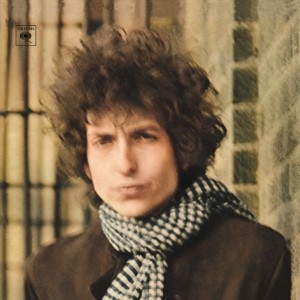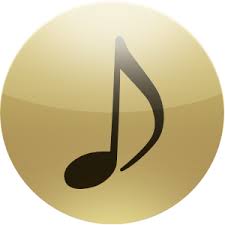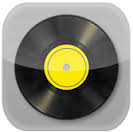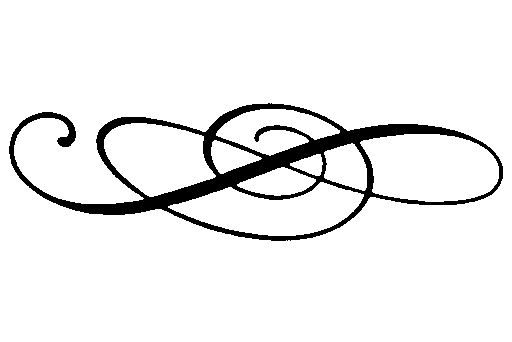

 Bob Dylan
Bob Dylan
| Release date | Label | Producer | Genre | Length | More info |
| 1966.05.16 | Columbia | Bob Johnston | Singer-Songwriters | 72:52 |  
 |
Thin wild mercury sound: New York roughness tempered with Nashville smoothness.
Background
For all of Bob Dylan's importance to the emergence of rock music as a serious art genre, it is curious that there was only one year in Dylan history in which Dylan actually played rock music, with a huge, focused emphasis on the "rock" part: 1965, namely, the electric side of Bringing It All Back Home and more or less the entirety of Highway 61 Revisited. That is to say, obviously there would be plenty of electric guitar riffage on his later albums from time to time, and even more of that in his live shows, but 1965 was really the only year when loud, aggressive, distorted guitar playing, a heavy rhythm section and a suitably aggressive vocal attitude were his primary concern. By the end of that year, though, he'd achieved what were probably his two major goals - pissed off enough of his folkie followers to establish an image of "nobody tells Bob Dylan what to do", and showed all those British Invasion suckers the proper way to go from here, as the Beatles, the Stones, and everybody else took their cues and accelerated their evolution on those Dylan steroids. And so, by the time 1966 rolled along, the "screechy rock'n'roll thing" was already a thing of the past for him - mastered, assessed, inventarized, marked for potential usage if necessary, but totally not obligatory. He may not have realized that himself, in fact, but this is precisely what was happening to him as, throughout late '65 and early '66, he was wasting session after session in New York, trying to record his third "rock'n'roll album", using The Hawks as his backing band. Salvation came from producer Bob Johnston, who suggested exactly what Bob needed at the time - a move to Nashville, which would allow him to add a strong country component to the folk and rock components that he'd already assimilated.
Technically, the "country-rock" fusion, usually associated with the likes of The Byrds and Gram Parsons, would not take place for another couple of years, and in 1966, few things could seem more "square" to people in just about all of the progressive genres of the time than the sounds of Nashville (in fact, Albert Grossman, Dylan's manager, was vehemently against the move to Nashville at first, probably for that very reason). But the miracle of Blonde On Blonde is that (unlike some of Bob's post-motorcycle albums) it was never about "country-rock" as such; it was all about creating a completely different, new, unpredictable, spontaneously generated kind of sound that would transcend all stereotypes - and you cannot consciously plan, realize, support, and develop this kind of thing, because it's here today and gone tomorrow. Together with Pet Sounds and Revolver, Blonde On Blonde completes the holy trilogy of 1966, but in a way, it's far more enigmatic than the other two, because the formula of Pet Sounds and that of Revolver have been understood and at least partially mimicked many times since, whereas absolutely nothing in the world has ever sounded like Blonde On Blonde, just because nobody would know where to begin. Blonde On Blonde would be the peak of Dylan's spontaneity - a double album recorded and produced without any pre-planning, running on spuriously generated charges of inspiration, electric fields that condensed around Dylan and drew in all the musicians in the studio. It might not be the best album in the world, but, the way I see it, it is the single most magical album in the world, a mystery that no musicological analysis will ever be able to properly crack.
Some basic factsUpon release, Blonde On Blonde became the first double LP in the history of rock (not pop) music, although, to be fair, the recording sessions were held at exactly the same time as those for The Mothers of Invention's Freak Out!, and out of general fairness, one should probably declare this a tie (although, also to be fair, Dylan's album is longer than Zappa's by a good 12 minutes, and ʻSad-Eyed Lady Of The Lowlandsʼ is not such a blatant case of padding as is ʻReturn Of The Son Of The Monster Magnetʼ). Chart-wise, the record did not sell nearly as well as its predecessor in the US (possibly for being more expensive?), but it did rise higher than Highway 61 in the UK charts - a fairly ironic bit of trivia, considering the well-publicized (but much exaggerated post-factum) "lambasting" of Dylan during the subsequent UK tour - and, of course, it's been a critical favorite ever since. The fact that Blonde On Blonde is longer than the average listener's patience, frankly recycles some of the older ideas, and never pretends to rock as hard as the 1965 albums, has somewhat damaged its reputation in the long run: intuitive statistics has always suggested to me that modern listeners tend to drift either to Highway 61 Revisited (because it is louder, faster, and more aggressive) or to Blood On The Tracks (because it is more personal and accessible) as their favorite Dylan albums, and are sometimes left baffled by the critical admiration for Blonde On Blonde, blaming it on the usual highbrow bias in favor of epic, drawn-out, verbose "art pieces". But blessed are those who actually get this record, and I count myself among the lucky ones...
For the
defense
Since I have already written two quite lengthy reviews of the album, this section has to find some special angle, and I am rather at a loss here, so let us try something completely bizarre - for those of you, ladies and gentlemen, who'd like to get a little more out of Blonde On Blonde, but has no idea how to do it, here's something truly special: Blonde On Blonde - The Musical! Starring Robert Zimmerman as Bob Dylan (in the musical's only singing role), Rainy Day Woman #12 as Bob Dylan's first (and failed) love interest, Absolutely Sweet Marie as a temporary diversion, and Rainy Day Woman #35 (a.k.a. Sad-Eyed Lady Of The Lowlands) as Bob Dylan's second (and successful) love interest. Please keep in mind that The Musical reverts the songs to their correct running order, as opposed to the strategic diversion of shuffling them around on the original LP.
Act 1: The protagonist, a former country bumpkin from the snows of Minnesota, arrives in the Big City (wherever that is) and immediately succumbs to its charms, temptations, and vices: ʻRainy Day Women #12 & 35ʼ obviously takes place in a bar where our hero is trying to get the girls' attention by proclaiming that "everybody must get stoned". Turning his attention to #12, he attempts to court her in a rather aggressive, persistent, and cocky manner, probably believing that in the Big City, delicacy is for sissies (ʻPledging My Timeʼ), but #12 turns out to be a tough nut to crack, so eventually he has to resort to begging and pleading (ʻTemporary Like Achillesʼ). Eventually, he manages to get it on with #12, who turns out to be a pretty complex, ambiguous personality - a rich socialite, probably, with lots of personal problems that she hides behind a luxurious facade (ʻJust Like A Womanʼ). These problems escalate when she's found to be cheating on the protagonist with her personal doctor, wearing nothing but a ʻLeopard Skin Pill-Box Hatʼ - this is when the protagonist totally breaks down and states that ʻMost Likely You Go Your Way And I'll Go Mineʼ . Later on, he cools down a little bit, but things have been irreparably broken all the same, so he bids the lady a bittersweet goodbye with ʻOne Of Us Must Knowʼ and wanders off into the snow. Drinking himself to oblivion, he turns to bitter cynicism once again and spills his guts out to ʻAbsolutely Sweet Marieʼ, the local town mistress - "I'm just sitting here, beating on my trumpet", because there's really nothing left to do.
Act 2: As time goes by, our hero sinks into deeper and deeper depression, feeling worthless and unwanted (ʻStuck Inside The Mobileʼ). His fortune runs out, too, so he rents himself a small bit of space in an empty loft, where he eventually begins to experience complex hallucinations, raving about an intangible female ideal (ʻVisions Of Johannaʼ), while nearly freezing to death. Eventually, the visions and hallucinations turn into feverish nightmares, in which he is being chased and taunted by fifteen jugglers, five believers, and God knows who else (ʻObviously 5 Believersʼ). It is up to Rainy Day Woman #35, then, whom he'd originally slighted in favor of the more superficially attractive #12, to save him from this poor condition, and as she takes him under her wing and nurtures him back to health, he finally comes to his senses and offers a tender ode of gratitude (ʻ4th Time Aroundʼ). Ultimately, he makes her a formal (well, somewhat formal) proposition (ʻI Want Youʼ), and as she accepts, the hero finally finds inner peace and happiness, rounding out things with a lengthy serenade that combines praise and admiration for his beloved with a sense of deep wonder at the inaccessible depths of her personality. Curtains!
Actually, as silly as it may sound (although we've all probably seen and heard tons of musicals that were way sillier), the point of this presentation is that all the songs on Blonde On Blonde make perfect emotional sense - that they work as a certain jumbled, but valid concept album that tells the story of a confused, tormented personality, seriously torn between arrogant, condescendent self-confidence, on one hand, and humble admiration of somebody else's enigmatic charms, on the other (which is quite clearly a psychological progression over the much more straightforward Highway 61). As for the music, and how it perfectly matches and deepens those different emotional shades, I've already tried writing about that elsewhere in much more detail, so, once again, I'll just re-state that, even if Blood On The Tracks is generally more intelligible and easier to relate to, that whole album covers but one small part of the vast emotional spectrum that is Blonde On Blonde, the closest Dylan ever came to mapping out his own musical War & Peace.
For the prosecution
The prosecution has no case here whatsoever. Yes, I used to be somewhat bored with ʻTemporary Like Achillesʼ (viewing it as a lazier, blander rehash of ʻJust Like Tom Thumb's Bluesʼ), but now that I've seen its place in The Musical, I don't have any problems with that song. Other than that, the album has always been perfect anyway. You can't even accuse it of a lack of diversity, because it's got a bit of everything - blues, folk, pop, rock'n'roll, marching band, balladry, whatever. Perhaps the only serious complaint is that ʻSad-Eyed Lady Of The Lowlandsʼ should have been five or six minutes longer. After all, 12 minutes is a bit scarce to fill up an entire LP side.
Conclusion
| Melody | Voice | Mood | Production | Innovation/Influence | Where it belongs | RYM preference | |
 |
 |
 |
 |
 |
 |
#32 (Aug 07, 2016) |

| Previous entry | Main page | Next entry |